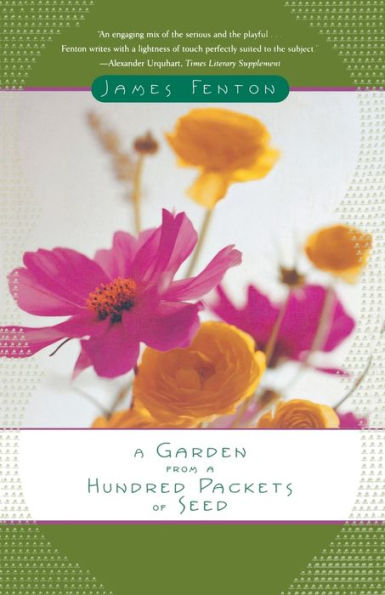A Garden from a Hundred Packets of Seed
"An engaging mix of the serious and the playful, and Fenton writes with a lightness of touch perfectly suited to the subject." —Alexander Urquhart, The Times Literary Supplement
Forget structure. Forget trees, shrubs, and perennials. As James Fenton writes, "This is not a book about huge projects. It is about thinking your way toward the essential flower garden, by the most traditional of routes: planting some seeds and seeing how they grow."
In this light hearted, instructive, original "game of lists," Fenton selects one hundred plants he would choose to grow from seed. Flowers for color, size, and exotic interest; herbs and meadow flowers; climbing vines, tropical species—Fenton describes readily available varieties, and tells how to acquire and grow them.
Here is a happy, stylish, unpretentious, and thought-provoking gardening book that will beguile and inspire both novice and expert alike.
"1100941837"
Forget structure. Forget trees, shrubs, and perennials. As James Fenton writes, "This is not a book about huge projects. It is about thinking your way toward the essential flower garden, by the most traditional of routes: planting some seeds and seeing how they grow."
In this light hearted, instructive, original "game of lists," Fenton selects one hundred plants he would choose to grow from seed. Flowers for color, size, and exotic interest; herbs and meadow flowers; climbing vines, tropical species—Fenton describes readily available varieties, and tells how to acquire and grow them.
Here is a happy, stylish, unpretentious, and thought-provoking gardening book that will beguile and inspire both novice and expert alike.
A Garden from a Hundred Packets of Seed
"An engaging mix of the serious and the playful, and Fenton writes with a lightness of touch perfectly suited to the subject." —Alexander Urquhart, The Times Literary Supplement
Forget structure. Forget trees, shrubs, and perennials. As James Fenton writes, "This is not a book about huge projects. It is about thinking your way toward the essential flower garden, by the most traditional of routes: planting some seeds and seeing how they grow."
In this light hearted, instructive, original "game of lists," Fenton selects one hundred plants he would choose to grow from seed. Flowers for color, size, and exotic interest; herbs and meadow flowers; climbing vines, tropical species—Fenton describes readily available varieties, and tells how to acquire and grow them.
Here is a happy, stylish, unpretentious, and thought-provoking gardening book that will beguile and inspire both novice and expert alike.
Forget structure. Forget trees, shrubs, and perennials. As James Fenton writes, "This is not a book about huge projects. It is about thinking your way toward the essential flower garden, by the most traditional of routes: planting some seeds and seeing how they grow."
In this light hearted, instructive, original "game of lists," Fenton selects one hundred plants he would choose to grow from seed. Flowers for color, size, and exotic interest; herbs and meadow flowers; climbing vines, tropical species—Fenton describes readily available varieties, and tells how to acquire and grow them.
Here is a happy, stylish, unpretentious, and thought-provoking gardening book that will beguile and inspire both novice and expert alike.
13.0
In Stock
5
1

A Garden from a Hundred Packets of Seed
144
A Garden from a Hundred Packets of Seed
144Paperback(First Edition)
$13.00
13.0
In Stock

Product Details
| ISBN-13: | 9780374528775 |
|---|---|
| Publisher: | Farrar, Strauss & Giroux-3pl |
| Publication date: | 04/20/2005 |
| Edition description: | First Edition |
| Pages: | 144 |
| Product dimensions: | 5.50(w) x 8.50(h) x 0.32(d) |
About the Author
From the B&N Reads Blog
